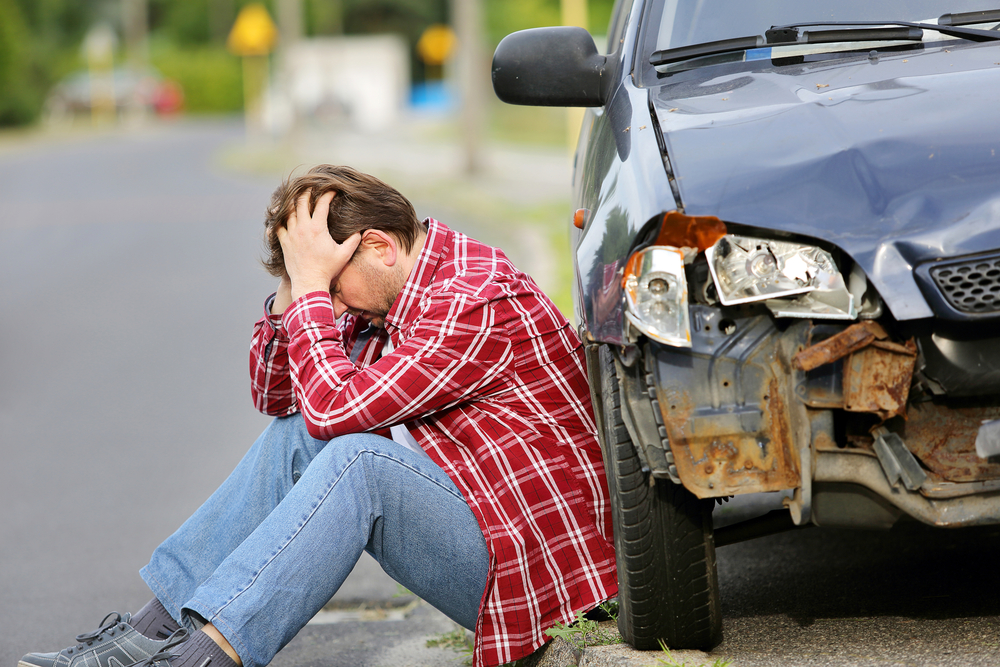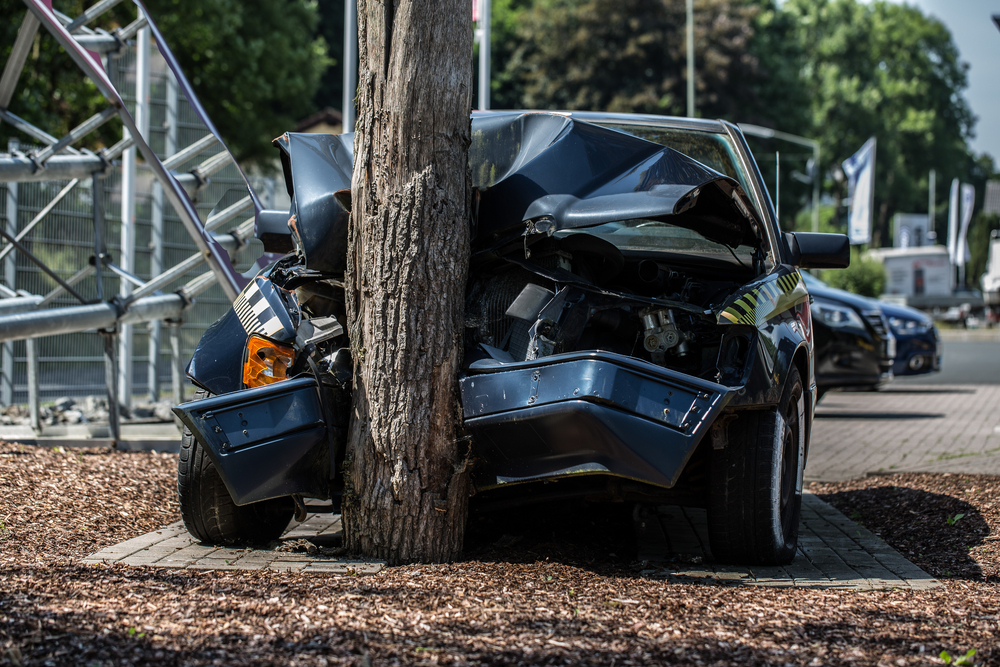What Happens When You Total a Financed Car?
Getting into a car accident is every driver’s worst nightmare. Depending on the extent of the accident, the damage to the car could be minimal (as with a small fender bender) or it could be so bad that the car is actually totaled.
What happens if you total a financed car? Financing a car is very common. Many car owners have a car loan on their vehicle, and this means that the lender has a financial stake in the vehicle; this financial stake is called a lien.
When a car is totaled and there is still an outstanding loan balance on the vehicle, there are a few scenarios that could happen. All of these scenarios could lead to very different financial implications for the borrower/car owner.

When a Car is Totaled without Primary Insurance
Totaling a car when it isn’t insured is the absolute worst case scenario for the buyer. Before the car is driven off the dealership lot, the car owner should make sure that they have insurance to cover the vehicle. Not only does a driver have the legal responsibility to hold auto insurance, but this coverage also protects the car owner/borrower from any potential devastating financial consequences if they get into an accident.
According to Bankrate, New Hampshire is the only state in the U.S. that does not require drivers to carry insurance. If a driver is pulled over and it is revealed that they don’t have insurance, the penalties will vary from state to state.
However, if a driver is in an accident, and they don’t have insurance, the financial repercussions can reverberate far beyond just a ticket. If the driver was at fault, the financial responsibility for the other driver’s hospital bills, car damage, etc. will likely be on the driver.
The financial devastation also extends to the driver’s own vehicle. If the vehicle isn’t insured, the driver will need to find a way to pay for repairs. If the vehicle is totaled, and the car owner is still paying off the loan, the car owner will likely be responsible for whatever needs to be paid to the lender.
Even if the accident wasn’t the fault of the uninsured driver, there could still be consequences. Nolo explains that the lack of insurance “…could limit your ability to get compensation for your car accident injuries and related losses.”
States have different ways of guiding the accident process and the damages that can be collected from accidents. Some states are “no fault” states, which mean that the injured party has to collect from their insurance provider. Other states have “no play, no play” laws, and this means that if the driver wasn’t at-fault but also wasn’t insured, they have limits on what they can collect from the other driver.
When a Financed Car is Totaled Without GAP Insurance
A car owner whose car is totaled in an accident also might discover that they are underinsured. The car owner might only have primary insurance coverage that protects their vehicle and provides liability coverage, too.
However, there are limitations on insurance coverage. Most policy holders have to pay a deductible as part of their coverage; this is deducted from any payments made to the car owner for repairs or for a totaled vehicle.
If the vehicle is totaled, the insurance company will pay for the vehicle’s “actual cash value”. Kelley Blue Book explains that actual cash value reflects deductions from the car’s depreciation. Since cars depreciate once they drive off the lot, the actual cash value of a totaled vehicle could be much less than what a car owner owes to a lender.
Not only might the car owner receive less than what they owe, but, again, they also will be responsible for their deductible. The insurance company will pay the lender the actual cash value of the vehicle (less any applicable deductible), and the car owner will likely be responsible for the difference.
When an individual purchases a new car, the dealership might offer ‘GAP insurance.’ GAP stands for ‘guaranteed asset protection’ and will typically cover the difference between the actual cash value of the vehicle and the loan amount. GAP insurance helps car buyers who may be underwater in their loan.
Some car insurance companies could offer GAP insurance as part of the policy, but car owners need to check with their insurance to see if GAP insurance is part of their coverage. Otherwise, car buyers who know they are underwater at the time of purchase might need to purchase this coverage as added protection.

When a Financed Car is Totaled and Has Both Primary and GAP Coverage
Car owners might pay for both primary auto insurance and GAP coverage for a vehicle. In this case, the car should have enough coverage to pay off the lender in case the vehicle is totaled.
Deductibles, though, might still be an issue. However, KBB explains that GAP coverage also could cover the deductible. Even if the car owner was responsible for a deductible, covering $500 for a deductible is much better than paying off $10,000 for an underinsured vehicle.
When a Financed Car is Totaled and Has Equity
The final scenario that a car owner might face is that their car is totaled near the end of their loan term. In this case, the car might have enough equity in the vehicle that the insurance settlement is enough to pay the remainder of the car’s remaining loan balance. The car owner might even have money remaining after paying off the car’s loan to make a down payment on another vehicle.
However, the lender will be paid first, as they hold a lien on the vehicle.
Things to Consider when Buying a Vehicle
While car buyers don’t want to think about totaling a new vehicle, accidents happen. Sometimes accidents might be unavoidable. Drivers also can’t control the actions of other drivers on the road.
When buying a new vehicle, car owners need to ensure that their car is properly protected by insurance. Car owners need to weigh the price of insurance premiums and deductibles, too. Some buyers would rather pay higher premiums for lower deductibles. Others would rather deal with a higher deductible than pay more money for those premiums.
If a car owner knows that their car will be underwater at the time of purchase, GAP coverage could help them in the event that their vehicle is totaled. Even if another party is at fault for the accident (assuming the car owner doesn’t live in a no-fault state), insurance will only cover the actual cash value of the vehicle.
The ‘totaled’ value could be much less than what the car owner owes to their lender. If they don’t have GAP coverage, they could end up severely impacted by a car accident that wasn’t even their fault.
When buying a vehicle, car buyers can investigate coverage options through their current auto insurance provider or by purchasING GAP coverage from the dealership. Car buyers might consider GAP coverage when they are only able to make a small down payment or when they rollover a previous auto loan into a new loan.
Finding the Most Affordable Vehicle
Car buyers who are on the hunt for a new vehicle might focus on the options that are within their specific budget. Ideally, car buyers should have money set aside to make a down payment on their new vehicle. However, a trade-in also can help offset the value of a newer purchase.
A larger down payment can help offset the costs of depreciation for the vehicle. Nerdwallet advises that car buyers should allocate 20 percent of the purchase price for the down payment. This means that if the car costs $30,000, then the buyer should make a $6,000 down payment.
Not all buyers are in a position, though, to make such a substantial down payment. Some borrowers are faced with needing a car ASAP. They may have little saved up for a down payment.
While down payments can help offset those depreciation costs, Nerdwallet also explains that a higher down payment can lead to lower interest rates and lower monthly payments, too.
Again, a trade-in also can help with the down payment. If a car owner has a trade-in that is worth $4,000 and is buying a $30,000 car, that trade-in counts towards the down payment.
Exploring New Car Options
Car buyers might be in the beginning phase of their new car search. RelayCars provides immersive tools to explore all the options. With RelayCars, car buyers can explore cars via 3D models, augmented reality or even use Google Cardboard to explore cars in virtual reality..
RelayCars offers an inventory of thousands of vehicles. Car buyers can research the car’s base price and features, too. When researching cars at home, buyers can use their smartphone or tablet camera to explore their favorite models in augmented reality.
RelayCars lets cars appear in the user’s own environment to create an augmented reality car showroom. Car buyers can drop a car model into their living room, their garage or their driveway.
While users can access the augmented reality experience via the RelayCars’ website, the app offers a virtual reality experience, too. With the virtual reality experience, however, buyers need to have a Google Cardboard viewer.
Download RelayCars for free via the App Store or Google Play!
Recent Posts
Categories
Luxury Cars
Trucks
Sedans
